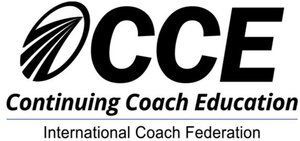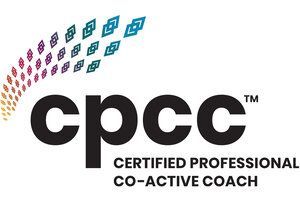Crafting Your Path as a Person-Centred Lawyer

FINDING THE RIGHT PATH FORWARD
Congratulations! You have come a long way, from being qualified for law schools, to securing training contracts in the midst of Covid-19 pandemic, and finally to being admitted to the Bar! This is indeed a memorable moment to celebrate, and be proud of your achievements thus far, but also the time to take stock and reflect on your path forward.
For those of you who have a clear idea of the practice area in which you want to start your legal career, and have been offered a job – you are among the more fortunate ones. Many others, as I understand, are still pondering about which practice area or which firm to join. As a Panelled Counsellor under the Law care program and Career Path scheme of the Law Society, I have often been approached by young lawyers who wonder whether they are suited for what they are doing, or even whether law practice is for them.
By now, you would probably have a taste of the two main practice areas – Disputes and Corporate, and you might have been given a glimpse of some of the more focused practice areas. Hopefully, through your training and speaking to practitioners in the relevant practice areas, you would have an idea how it is like to be a disputes lawyer vs a corporate lawyer, and you have formed an opinion which practice area you are more inclined towards. In deciding which practice area is most suited for you, I encourage you to reflect and evaluate your values, interests, strengths and weaknesses.
VALUES
Do ask yourself what is most important to you in your legal career? Why did you choose to be a lawyer in the first place? Do you see yourself as the sort of justice lawyer who would Fight for the underdog and make a difference to the society? Do you have a passion to serve the community and be involved in family law matters? Or are you attracted to the corporate world where deals are made and solutions are created? I would urge you to follow your passion as well as your mission in choosing your practice, because if you are doing something fulfilling and meaningful to you, you will have more capacity to put in the hard work.
INTERESTS
Some of you love advocacy and could see yourself arguing in court. Some might be interested to see how a deal is structured, and what goes into a contract between two opposing parties. Many are attuned to technology and have a flair for the applications of intellectual properties. There are also lawyers who prefer the more routine type of work with manageable pace. Whatever your interests and temperament, there would be some practice areas within the diverse legal profession that might suit you.
STRENGTHS AND WEAKNESSES
As lawyers, we are usually better in some traits but not everything. Some have great advocacy skills, and the knack for strategising to win in court. Some others are good solution creators, and have the capability to draft ideas into contracts. Many have good interpersonal skills, and are skilled in people management and project management. Learning to play to your strengths and recognise your weaknesses, is part of the process in finding the right path for yourselves.
NEVER TOO LATE
You may not land yourself at the most suited firm or practice area at the first instance, and you may only discover that after a few years of trying out different firms or practice areas. However, do take heart that everything that you do in your early years of practice will only make you better in your next job. So, it would not be a waste of your time and effort if you need to take a few years to find your path, and it is never too late to change course. Even if you come to realise that the law profession is not for you after several years, you would have mastered some useful skill sets and made some good friends along the way, and your experiences would only enrich you.
BEING A PERSON-CENTRED LAWYER
I had learned in my master’s course in counselling (after my career as a corporate lawyer in private practice for over 25 years), that the three core conditions highlighted by Carl Rogers (1977) for being a person-centred therapist or counsellor are -- non-judgemental, congruence and empathy. As I look back, I realise that I had, albeit not consciously, actually applied the same three conditions, during my time as a lawyer. I would partly attribute to my practising of these conditions for being successful in sustaining myself all those years a a transactional corporate lawyer in a highly stressful environment.
NON-JUDGEMENTAL
As a lawyer, we owe our duty to our clients (subject to the overriding duty owed to the court and upholding the law). Clients come in all forms and shapes; some are more demanding or idiosyncratic than others. It is not your place to judge your clients, regardless of your personal opinion or moral/ethics standards. It is your duty to act in the best interest of you clients, and advance their goals and objectives as instructed.
The same principle of having positive regard would apply to treating the people whom you work with, subject to reasonable standards of respect, non-discrimination and boundaries.
It would greatly facilitate your work, if you focus on the objective of the case/transaction and the task at hand, and not let your personal judgement of the clients or colleagues affect your emotions and stand in the way. Avoid personalising or labelling of others or yourself, and try to be rational, open-minded and receptive to others, including your subordinates.
CONGRUENCE
It is of utmost importance that we stay true to ourselves at all times, and act in a manner that is congruent with our feelings. If you are having difficulty with certain issues, take control of the issues and face them up-front. If you do not find your work fulfilling, reflect on what you are doing and whether it accords with your values and passion. If you are experiencing burnout, evaluate your actions and working environment, and take steps for self-care or have a change of environment. If your health is suffering or your personal life is falling apart because of your work, take stock of your current priorities in life.
It also pays to be sincere and honest with your clients and the people that your work with. If you think you are not able to meet certain deadlines, it is better to be truthful about it and manage the client’s or your supervisor’s expectations. If you have made any mistake, take ownership and apologise for it. If you disagree with your client’s or your co-worker’s approach, share your views in a respectful way.
You will earn the respect of your clients and colleagues by being congruent and mature, and managing any issues in a professional manner.
EMPATHY
For a lawyer to be effective, besides being technically sound, he/she needs to be good at reading people, reading the room/court, and understanding the issues or situations. It is therefore important to have empathy, the ability to put yourself in the shoes of others, and try to understand the situation from the perspective of your client, the counter-party, the opposing counsel, and other stakeholders. By understanding the client and other opposing side, you will be in a better position to provide a good solution to satisfy the parties concerned.
Similarly, having empathy for the people that you work with will reduce a lot of workplace conflicts. Looking from the other person’s perspective and not jumping to conclusion are important traits for enhancing healthy working relationships. From what I can see, empathy appears to be a rare commodity within the legal profession. This could be due to the high level of pressure from top down, causing everybody to be single-mindedly concerned about meeting his/her own performance targets or deadlines. Practising empathy will enhance your emotional intelligence which is an asset that is just as important, if not more, as your technical skills in sustaining your law practice.
However, above all, you must always have self-compassion, and not be too critical about yourself or your mistakes. Having a high but realistic standard for your work is fine, but trying to be perfect is unhealthy as there is no such thing as being “perfect”. You should not be afraid to make mistakes, as you learn by making mistakes, just like any other senior lawyers in the profession.
PARTING WORDS
As a newly admitted lawyer, do take your time to explore and find the right path for yourself, and a firm that offers the right fit for you. Try practising the key conditions of being a person-centred lawyer -- by being non-critical, congruent and empathic, to self and others. If there are more person-centred lawyers in the legal industry, it would be more sustainable for young lawyers to remain in the profession for the long haul.
Once again, congratulations, and best wishes to you in crafting your path forward.
Chei Liang Sin, a Law Society counselor, contributed the above article in the August 2021 issue of the Law Gazette, to share her thoughts and advice with the newly-called lawyers who have just been admitted to the Singapore Bar. Chei Liang believes that the same considerations and philosophies would apply to any other professions or careers. If you would like to seek career counseling or coaching, feel free to contact Chei Liang at cheiliang@counselingperspective.com.
About the Author: Originally from Malaysia, Chei Liang Sin has lived in Singapore for the past 30 years. She speaks English, Mandarin and Cantonese. A former corporate lawyer, Chei Liang made the career change to be a counsellor because she wanted to touch people's lives in a more meaningful way. She works with clients on various mental health issues and also provides career counselling. Read Full Bio >










